Happy Free Comics Book Day to all who partook, which I hope was most of you. The big story from my point of view was the release at last of our first little X-MEN story, a story we sent off to print back in January. Response from what I’ve seen today has been largely good, so that’s a positive first step. From here, the next taste comes at the end of UNCANNY X-MEN #700, the final Krakoa-era issue edited by Jordan D. White. My crew produced the final ten pages of the issue, which segues very directly out of the wrap-up that comes immediately before and gives a sense of the table-settings of a bunch of key characters before we roll into the actual issues themselves. Hope to see you along for the ride!
And more local-to-home, last week we passed 5000 subscribers to this feature, which is amazing—especially when you consider that, going in, I considered a reasonable goal to be 1600 readers. But do anything regularly for long enough and you’re bound to pick up a few people. So thanks for being a part of the select few who know to waste their Sunday mornings with my typical tripe. And as Stan Lee would say, it’s only onward and upward from here, hopefully!
I can tell that the X-MEN stuff is starting as the number of questions that I’ve been receiving every week has started to go up. Which isn’t a complaint, it’s an absolute boon, especially as compared to the earliest days when I’d have to struggle to fill this opening section.
Joe West
Are we going to see a cosmic team in this new era of X-Men? S.W.O.R.D. was a great book that unfortunately didn’t have enough time to fully flesh out, and X-Men Red was amazing but it was all Arakko-focused. I know Phoenix will be *the* cosmic book for the X-Line, but I’d love to see a mutant space squad again.
I think you’re going to have to wait and see, Joe. Though I don’t know that there’s specifically a need for a cosmic group book especially with PHOENIX as a part of the line. It’s a reflection of my larger mode of thinking, which is that we need fewer team titles and more solo series in general.
Brandon Giles
1) What was the thought process behind the way in which Frank was taken off the board? It seems like it was meant to feel permanent, but the actual circumstances mean that someone could fairly easily bring him back and restart the controversy if they wanted to.
2) Are there characters who, if a writer pitches you a story involving them, are automatic “no’s” for reasons of controversy/confusion/etc?
Well, yes and yes. Our intention with that PUNISHER project was to wrap up Frank’s story somewhat definitively, but not in such a way that nobody could ever bring him back. Because you never know what tomorrow is going to bring.
There are certainly characters that we can’t use because of right issues: pitch me the greatest Conan story in history, it isn’t going to work out. Beyond that, there are other characters who are strongly tethered to outdated stereotypes—I’m thinking of people such as the Mandarin, for example—where you’d need to have a pretty compelling new take to overcome the institutional racism of the concept. So it isn’t absolutely impossible, btu I wouldn’t like your odds. And in general, I don’t love stories about complicated continuity. So pitching me to bring back, I don’t know, the alternate universe Tony Stark that Robert Kirkman used in MARVEL TEAM-UP fifteen or twenty years ago isn’t going to get a warm welcome. But from there, it’s down to you to convince me of the value of what you want to do. But I want to produce stories that ordinary human beings can enjoy.
Leigh Hunt
Interested in your comments about artists keeping to a monthly schedule. Back in the day, many artists drew one (or more) books per month and I'm not talking about sub-par creators. Why is it that now only a selected few current Marvel artists are able to keep to a regular monthly schedule on a lengthy basis?
The biggest reason, I expect, Leigh, is that the expectation of the audience as to what constitutes acceptable artwork. I had to recreate it here, but some time ago, Erik Larsen posted this comparison:
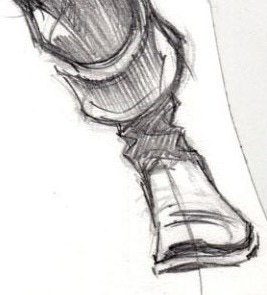
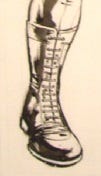
I think it’s pretty clear that what passed for the boot on a super hero comic in John Buscema’s day and what passes for one now requires a whole different level of detail and specificity. And that takes time. But on an entirely different level, back in the day, if you were a comic book artist and you wanted to make a decent living, you probably needed to be able to produce two books a month in order to earn enough. But today, the pay rates are more equitable, and a decent living can be managed through fewer pages—though those pages require a greater amount of time each. And then finally, the marketplace also changed what the penciler and the inker have come to regard as their jobs. Today, most pencilers attempt to draw finished artwork, practically photo-ready, without leaving a whole lot left for the inker to fill in. But back in the 1970s, especially under the Marvel method, what people were looking for most artists to do was just to break down the story visually. The final finish on the page was the responsibility of the inker. As seen below, when he was just doing breakdowns, John Buscema didn’t have to do a whole lot of finished drawing at all. Today, not only does practically nobody work in this fashion, but it’s likely that we’d have a difficult time finding finishers accomplished enough to take Buscema’s work here and turn it into finished pages of artwork as Tony DeZuniga does in this sample.
Jess Nevins
Probably the answer to this is "wait and see," but--the X-Men turned into killers in the fight against Orchis. For me, it was a bit jarring. Will this be addressed in some fashion, or should I just assume that the X-Men think "That's how it goes in war" and any PTSD is dealt with in therapy?
Well, this is hardly the first time that the X-Men have used lethal force in a wartime situation, Jess. As far back as the Mutant Massacre, the X-Men have occasionally fought to kill, not just incapacitate, their foes. But all that said, I tend to be an advocate of super heroes only doing so when there is no other option available, and some of the killing in the current Orchis War does strike me as unnecessary, and even cruel. So it’s certainly something that we’ll get back to and address in certain instances. In particular, Kate Pryde’s whole story stems from the actions she took during that conflict and the effect they’ve had on her.
Nacho Teso
Question: is it gonna be Kitty Pride or Kate Pride in From the Ashes? I love that she now goes by Kate, and I hope it keeps being that way.
She starts out as Kate, Nacho. Whether she remains that way only time will tell.
Tom Galloway
Any particular reason you think the time is right for multiple solo X-titles? As far as I can recall, while there've been quite a few mini-series over the years, the only two long-term successful solo X-titles have been Wolverine and Cable (I don't count Dazzler's run from before joining the team, and Beast's long ago solo run was in the single digits). The thing about Logan and Cable would seem to me to be they were introduced as having a lot of mystery in their backgrounds along with an implied history of *not* being part of the team, and that made it easier to set up stories outside of the team. But for decades now the X-Men and associates have really had no significant lives outside of the team(s). So while characters are familiar, they have to start their solo series almost from scratch; they need motivations and goals outside of the team, they need what's usually a whole new supporting cast and have to establish relations with them, they have to be interesting enough to carry the solo book as opposed to being part of a team with multiple characters having subplots and characterization, etc. And if anything, it'd seem to me you wouldn't want to write any of the established characters as dominating a team book, so a solo-ish base hasn't been created, at least recently.
I tell you, Tom, I don’t know that I ever feel like, “It’s never been done successfully before” is ever a good enough reason not to try something you think has merit. So I don’t know that the time is particularly conducive to it one way or another. I just know that I think it’s something that the line ought to be doing—and so, that’s what the line is gonna now do. It’ll be up to the audience whether this venture is successful, but that’s true of every part of it, really.
Ian A
Once you solve the Characters + Creators + Concept = Comic equation, how do you decide on fill-in/rotational artists? Do the core creators weigh in, and how much, if at all, does the shipping schedule (particularly 12 issues vs. 18 per year) impact your decision making?
The shipping schedule makes a lot of those decisions for you, Ian. Even if you’re simply talking about a monthly release schedule, most artists these days will take 6 weeks to draw a complete book. But the issues come out monthly, which means that time-gap has to be made up somewhere, by someone. For the most part, the regular artists don’t have any real say in who might fill in, although I’m always open to suggestions if they have them. But that’s my problem, not theirs. And obviously, the problem gets more profound if you increase the release schedule to 18 issues a year rather than just 12.
Jeff Ryan
Without naming names, has anyone pitched you a specific story (Captain America quits the Avengers to start a zydeco band!), you said no for whatever reasons, and then a few years later you saw the author pen a similar story (Superman quits the Justice League to start a klezmer band!) elsewhere?
Not really, Jeff. Once in a while, somebody will want to repurpose an idea that they came up with for one character into a story featuring some other character. But to do that properly, almost every plot element of the story needs to change, or else it really isn’t a good story in the first place. But I can trace, for example, Mark Millar’s unsold pitch to me for a SHOCKER project set in the Spidey world directly to his creation of WANTED without them being actually the same apart from thematically. They were both about a young slacker who inherited their father’s costumed identity and place in the underworld, but outside of that, every other aspect was different.
Mike
How do you and other creators feel about time travel? I think I’d stay away from it as a creator, but then again, I don’t have a compelling story (maybe I just answered my own question)
I think time travel is like any other storytelling option in your tool box, Mike: you can use it poorly or you can use it well. So I don’t have any problem with it per se, only in how it might be used in a given situation.
Jacob deNobel
For years now, Marvel books have routinely featured full-page movie poster ads for various MCU projects...BUT if you read them more closely, they're always advertising the streaming release of the soundtracks for these projects. It's always seemed odd to me; is there some kind of movie advertising loophole this gets around, or is there just a desire to get people to listen to the scores of the new releases?
I don’t know for certain, Jacob, but I’d guess that providing a certain amount of circulation for advertising among the target audience is a part of the deal to produce those soundtracks in the first place. So it’s advertising like any other campaign—but not something that requires a loophole or any such thing. The films themselves have so much universal advertising behind them that they may not feel a need to carry a page in the books apart from the occasional cover call-out that we sometimes do.
Pierre Navarre
What do you consider is THE best marvel comic book run of the last six years (since the start of the "Fresh Start" era in mid-2018) ?
I don’t think that’s for me to decide, Pierre. I was boots-on-the-ground all through that era. So turn it around, you tell me.
Thomas Parker
1. At least from the early marketing, it seems that Jed's Adjectiveless X-Men is going to be the main book of the era, while Simone's Uncanny X-Men is the spinoff title. What went into this decision given that Uncanny is the original X-Title. Should we expect Uncanny to no longer be the main book long term?
2. I found your discussion on Xavier fascinating. You mention that he has been increasingly seen/portrayed as incorrect in his eternal argument with Magnus. It seems to me that this coincides with larger cultural discussions about the downsides of assimilation and "White normativity". Will there ever come a moment when the entire franchise should pivot its morality away from assimilation and towards a new, less problematic Cyclops-style dream that embraces mutant self-rule?
3. I realize this last question might be a bit sensitive, but there's a lot of discussion of it within the fan community. Recent runs of Deadpool, Black Panther, Guardians of the Galaxy and other B-list books have all ended at around 10 issues. From the outside there doesn't seem to be a problem with sales, so why do these runs keep getting smaller? As a fan, longer runs tend to produce deeper stories more worth following, so this has been frustrating.
I reject the premise of your question here, Thomas. I don’t believe in there being a “main book.” And so, all three titles with X-MEN in the name are equally important to me and to the overall line. Jed’s book comes out first, but that’s just luck of the draw, something had to go first. Gail is certainly not going to be taking a back seat to Jed in any way—but neither of them want to mess with Eve, because they realize that she’s the queen.
Possibly, sure. I think these kinds of discussions evolve in real life, and they ought to evolve in our stories as well. That said, I don’t want to mistake cynicism for merit. In other words, as in the ”Superman and Batman have to kill” conversations, I feel they are driven largely by the story we as a society want to tell ourselves. So I’m much more focused on providing the story that people need, rather than the story that they want because it’s easy. I’ll never choose a lack of empathy for others as a virtue to be touted. But there are going to be characters throughout the X-line who feel all sorts of ways about the manner in which mutantkind should conduct itself and what its goals and objectives ought to be.
From the inside, it’s all about sales, especially as related to the cost to produce the titles. We’re not in the habit of killing profitable series, but we have overhead, and every title needs to be able to contribute to covering that overhead. If a given book can’t keep up the necessary margin, then something is going to have to change—and often, that change involves starting over with a new concept and a new creative team.
Don Alsafi
I remember an interview with Joe Quesada during its run in which he was asked about the lateness, and Joe (to the best of my memory) replied with a clearly annoyed "Gee, I DO have this other job you may have heard of!" (or something to that effect). And for a number of us, that response wasn't even irritating so much as... baffling? Like--of COURSE you do. That isn't news to us. But it also wouldn't have been an unknown factor to you, or to Marvel! So... wouldn't it have made more sense to "bank" the issues until the series was close to being done?
I guess I wouldn't be surprised if the reason this is rarely done is financial: If you're paying a team of creators, but aren't yet selling the results of their work, then you end up being (at least temporarily) in the red. But I've always felt the equally-obvious response to that is twofold:
One, that a corporation like Marvel could presumably absorb that (very short-term) loss of capital. Yes, they would be deferring the profit they would normally get from those sales... but I would think that when the product is then finished (or nearly), and starts being solicited and ordered, the reverse would be equally true: The publisher would at that point be absorbing profit for issues effectively released without the usual related costs (for that time period), since those wages had already been paid.
Secondly: Before there were multiple distributors, Diamond released (approximate) sales data every month. And every time a series ran late - and then later, and later - it turns out that what had previously been the expected and gradual drop of standard attrition quickly became a steep plummeting to the bottom, as more and more readers decided they'd lost interest. Two notable examples of this happening from the previous decade were SECRET WARS and FINAL CRISIS. In both cases, the increasingly months-long delays meant that these series were absolutely SHEDDING readers by the end. In other words, by prioritizing short-term ROI, DC and Marvel actually ended up selling significantly fewer copies than they would have if the titles had come out every month. (Or so it appears to the layperson, at least.)
I've always felt that the best way to sustain reader/viewer interest is to have the content come out on a frequent, consistent basis. (I also think a lot of Netflix shows would have MUCH better numbers if their binge model didn't mean that the collective discourse has generally already moved on to the new shiny thing after two weeks.) Has Marvel ever experimented with the above approach on other high-profile releases, and seen the sales drops significantly mitigated as a result?
I tell you, Don, you can’t go for very long in this business without somebody like yourself putting forward some version of this question, as though nobody at any of the companies had ever thought of this. And the truth is complex, having to do with a need to publish a certain amount of product and bring in a certain amount of revenue to keep the light on among other things. But one absolute truism with a lot of this business is that the work will expand to fill the available time. So if you give somebody six months to produce a ten-page story, some of them will get it done in two, some of them will just barely get it done in six, and some will still blow the deadline and need help to be bailed out—because the job isn’t pressing and other aspects of life are. Back when he was EIC, Tom DeFalco would frequently say that the surest way to get rid of a problematic project was to green light it—at which point the creative team would never get it done, and so you could stop worrying about it. This isn’t true of everybody, but it’s true of an awful lot of people. Also, speaking from personal experience, SECRET WARS was hardly shedding readers at an insane level by the end, it was a Top-Five project all the way to its conclusion. And more crucially, it’s performed exceptionally well as a collected edition—in part due to the fact that in that instance we held the line and allowed Esad Ribic the time needed to get it all done, even though it meant some of the post-Event launches were going to come out first. That’s the algebra that we use in determining when and where to hold the line. I can’t speak for FINAL CRISIS but I’d expect that the same is true there.
Arthur Allred
The Clone Saga has been released in my country (Brazil) and I just saw your name between the writers of one of the volume. I didn't know that you used to write, can you talk about how was writing for Spider-Man in that time?
I can and have to a certain degree, Arthur, in past installments of this Newsletter. Our eventual Index is still being worked on, though, so it’s not easy to point you to where you might find those write-ups—can any reader out there help narrow things down for Arthur at all?
Cian McDarby
Do you have any X-Men characters that either fly under the radar or are outright unpopular that you are fond of or have a soft spot for?
For example, I simply adore Longshot and think Nate Grey, the one and only X-Man, has a lot of seriously strong story potential nobody really has been able to bring out.
If I did, Cian, then that situation isn’t going to be a problem for them much longer, right? Because now I can use anybody that I want to regardless of how unpopular or obscure they are. I don’t know that I think either Longshot or X-Man are especially unpopular or obscure, though. The one limitation on all of this, of course, is the fact that there are more characters that people love than there are spots to feature them in books. But I wouldn’t think that either of those two gentlebeings will be off the canvas for too long.
Mortimer Q. Forbush
Can you share roughly where Bagalia is supposed to be?
Sure, Mortimer. It’s on Earth.
Spike Stonehand
Certain titles, like Amazing Spider-Man or Batman at the distinguished competition, seem to always sell well in the current market. Maybe some creators get a little more, others a little less, but the biggest titles seem to largely do well no matter what. In a situation like that, how does an editor decide "okay, we need some fresh voices" or "actually, can you keep this run going for another few years?" Is it still sales based, albeit with a higher floor, or is it largely per the editors taste? Or is it de rigueuer to let the high profile creators stay on the high profile titles as long as they want?
I hear this sentiment expressed by fans all the time, especially when they don’t like the title in question, Spike, and I have to tell you: to my experience, it’s just plain wrong. Sure, there’s an inherent popularity to Spider-Man or Batman—but the same thing is true of most of the marquee characters at both companies. So just because Spidey books and Bat books have been selling well for a long while doesn’t make that a steady-state situation. Just look at X-MEN. It was the unshakable top-of-the-heap series for two decades-plus, and people said exactly this about it. And then it wasn’t as much. Hopefully, we’re going to work to put it back on top again—but to do so, we’re going to need to outperform the Spidey titles and the Bat titles and everything else in the marketplace. Again here, I can’t speak for the Bat-books, but on an AMAZING SPIDER-MAN, you tend to make a chance either when you can feel that reader interest is going soft or when the creators tell you that they’re coming to the end of the line.
Robert
Can we expect more of a classic wolverine in the new era? with the accent and when he can't comeback from a drop of blood?
That's when he's most interesting as a character and has the better stories, in my honest opinion.
Wolverine regenerating from a drop of blood was always a special case, Robert, as anybody who actually read that story in detail rather than just hearing about it knows. But your point is well-taken. That said, it can be really difficult to pull back this manner of “power creep”—it takes a bunch of sustained effort. So we’ll see. I tend to prefer a Wolverine who is human and who has some limitations, but most readers and creators who have come to the character across the past twenty years or so have a different vision of him—just as they have a different vision of Batman. I don’t know how much, if at all, we’re going to be able to get that genie back in the box. (on the other hand, there’s what happens in UNCANNY X-MEN #3…)
Omar
I tried to pre-order Phoenix #1 recently as a Kindle title on Amazon but to my surprise I was unable to and after a couple searches I found out it’s been an ongoing problem that most marvel single issues are region locked and unable to be bought internationally like they were previously before the merger.
Is this a conscious decision on Marvel’s part or an oversight?
I don’t know for sure, but I expect that’s an Amazon problem rather than a Marvel problem, Omar. We did just announce a new deal with Veve for our digital releases, and hopefully the functionality there on such matters will prove to be an improvement.
Al Kennedy
I've been on a kick recently of trying to complete runs that aren't likely to be collected in the near future, and one of my current projects is collecting a complete set of Sleepwalker. As part of that, I picked up the Sleepwalker Holiday Special, which I see is credited to you and Mike Kanterovich as writers. Are you able to let us know how this issue came about? A character like Sleepwalker getting their own holiday special seems a bit out of left field. It having a cover and some pin-ups by Joe Quesada and Kevin Nowlan, and a completely different logo to the regular series, makes me wonder what the history of it was on the production side of things. Was it originally intended to be an annual?
I don’t really know the answer to this one, Al, but I can guess a little bit. SLEEPWALKER was edited by Don Daley, who was also the PUNISHER editor. And Don had had some success with seasonal PUNISHER Specials, a couple Back To School Specials and so forth. So he may have been thinking that the same approach would work with SLEEPWALKER, rather than simply doing just another Annual. It also may have been a way of side-stepping whatever the mandated Annual crossover or concept was going to be that year, if it was something that he felt Sleepwalker wouldn’t fit into well.
Ducc
You do say that there will be more younger readers now that are going to want to pick up the X-Books thanks to X-Men '97 (I'd imagine that the upcoming Exceptional X-Men and NYX are made with the Teen/YA audience in mind). The problem here is that younger readers tend to read comics either digitally or through TPBs. So why is it then that the sales/pre-orders of those formats never seem to be accounted for the total sales that determine whether an ongoing series gets to continue/be canceled?
Another one of the bits of common wisdom that are totally bogus here, Ducc—seems to have become something of a theme this week. But believe me, I’ve tried spending the money we make on our digital releases, and people seem to take it just as readily as the money we earn from our physical copies sold. There is no difference, it all factors in, we like you reading in whatever format best suits you, there is no material difference. Everything is accounted for when we make our decisions. Really.
Joe Vitale
What was the story that really hooked you as a young reader?
Well, Joe, there’s an argument to be made that it was this one but it may have been this one or even this one. And given where I ended up, a case could be put forward for this one or even this one.
Cedrick
My question is in regard to artist royalties and costume designs. When an artist designs a particular costume and look for a character, do they have any rights or receive royalties for the use of that design in ongoing comics and other appearances or merchandise? So, for example, in X-men the animated series, I heard that the original intent was to not use Jim Lee's designs since he had recently left Marvel at the time the series was in production. Of course, they did end up using his designs in the end. Did Jim Lee need to approve that decision? Did he/does he receive any royalties for it?
All this came to mind when looking at the released content for the new From The Ashes era. I was looking at the different costume designs from David Marquez and noticed that his Rogue and Gambit were basically slightly modified and updated versions of the classic Jim Lee versions (as they should be). If artists have no rights or royalties to their costume designs then this question is moot, but if they do, how does that play in to editorial decisions as to what costumes to use? Does that give more incentive for artists to change up and create their own versions of costumes? How much change is necessary for it to qualify as a new original design?
Costume design is a Work-For-Hire proposition just as working on the stories is, Cedrick, so the artists don’t receive any particular royalties from having designed a certain look nor do they have any say in how that design is thereafter used (or when it is replaced by some other newer design.) So this isn’t really an issue, it all comes down to the aesthetic of the creative team and the editors in question.
Behind the Curtain
.As scribbled by me in some long-ago meeting, meet the most successful new character in modern comics.
There’s something about the image of Wolverine as a young schnook that really tickles me.
Pimp My Wednesday
Another relatively large week before we hit a tiny drought. Here’s what’s coming your way this Wednesday:
It’s the FANTASTIC FOUR story that you never even realized that you needed, just about the goofiest plot we’ve yet put to page. And still, somehow, Ryan North and Carlos Gomez make it all work. It’s about Ben and Johnny trying to help out with the family finances by getting regular jobs and their escalating rivalry as they do so. The world really isn’t in peril this time out, the stakes are pretty low throughout. But it’s one of my favorite issues that we’ve done in this era. So check it out. Also, killer, killer Alex Ross cover—something that you could say about just about any of his covers, really.
And moving to my subordinates, Associate Editor Annalise Bissa has the first issue of the BLOOD HUNT tie-in series DRACULA hitting the stands, as produced by Danny Lore and Vincenzo Carratu. As you can see above, it’s also a bit of a follow-up to the BLOODLINE project Annalise oversaw last year—Brielle Brooks is a key player in BLOOD HUNT, so this tie-in is relatively important.
Also edited by Annalise is GIANT-SIZE X-MEN #1. No, not that one, a new one, with a focus on Warren Worthington, the Angel. It’s written by the always-interesting Ann Nocenti and illustrated by Lee Ferguson, and it introduces a new villain that I wouldn’t be surprised to see resurface in the future. But hey, what do I know about X-futures? The issue also contains a reprint of an especially daffy MARVEL TWO-IN-ONE story co-starring the Thing, so your entertainment value is assured!
And not to be undone, Assistant Editor Martin Biro is behind BLOOD HUNTERS, an anthology of stories taking place in and around that event, including A Hawkeye episode by Mark Russell and Bernard Chang, a Man-Wolf story guest-starring J. Jonah Jameson from Christos Gage and Javier Garron, and a Dagger adventure by Erica Schultz and Bob Quinn that continues into the next issue and is building to something larger.
A Pair of Comic Books On Sale 60 Years Ago Today, May 5, 1964
Doing a bunch of quick hits in this section this week. As you can see above, 60 years ago saw the introduction of the Avengers’ opposite number, the Masters of Evil, as led by Doctor (not yet Baron) Zemo. And as an example of the manner in which editor Stan Lee created a sense of synergy throughout his newly-growing line, he took it upon himself to christen the otherwise-generic Nazi scientist in that same week’s issue of SERGEANT FURY AND HIS HOWLIONG COMMANDOS Zemo as well, making him the same character. True, the Fury Zemo doesn’t use Adhesive X or wear a hood like the villain version does—but this did immediately give him a bit more legitimacy, as he was revealed in AVENGERS #6 to have been the villain responsible for the death of Bucky Barnes in the closing days of WWII. I wouldn’t be at all surprised if plotter and artist Jack Kirby didn’t know anything about the use of Zemo in SGT FURY #8 at all until it came out. Lee and Kirby were often not on the same page even in these early years, and it led to some interesting gyrations as one man would make some story decision and then the other man would do a later story that contradicted it, requiring an awkward rewrite. (The loss of Professor X’s ability to walk was clearly one of these situations.)
A Comic Book On Sale 20 Years Ago Today, May 5, 2004
I’m really only pointing out this issue of UNCANNY X-MEN #444 because, quite by chance, it was the subject of our editorial staff’s weekly Reading Circle just a week or so ago. It was the middle part of a sequence we’ve been doing studying the work of Chris Claremont, who wrote UNCANNY X-MEN for so long. We started with the classic UNCANNY X-MEN #268, illustrated by Jim Lee and just reissued as a facsimile edition, then moved on to the current WOLVERINE: MADRIPOOR NIGHTS #1 with followed up on that storyline. And then we went back and hit this issue, which marked Chris’s third and final stint on the core series. We found it to be overall a good opening, with some wonderful artwork by Alan Davis. But as the thinking was at the time, it was being written with the eventual collection as the ultimate version of the story, and so this first chapter isn’t entirely satisfying as a single unit of entertainment. It kind of stops haphazardly. it also brings in what was seemingly a ton of business from X-TREME X-MEN, the series Chris had been helming right before being called back to UNCANNY. And it wound up being a short return, so whatever they were doing here, it didn’t seem to completely click with readers of the period. I also can’t say that I love that cover focusing solely on Nightcrawler’s tail, one of three similar covers that ran on all of the X-Launches of the time, including ASTONISHING X-MEN #1. Not really a grabber there.
A Comic I Worked On That Came Out On This Date
AVENGERS: THE ORIGIN #2 came out on May 5, 2010, and as I wrote about the first issue of this project a month ago, you’d think I wouldn’t have anything more to say about it. And, really, I don’t. But I do really love this cool cover that Phil Noto did for this issue, and wanted to spotlight it.
Another Comic I Worked On That Came Out On This Date
Because there’s nothing that we love so much as a title that we’ve used previously, HEROES REBORN #1 came out just a couple of years ago, on May 5, 2021. It was the kickoff to a storyline that Jason Aaron had initially created to be simply an arc in his AVENGERS run, but which was blown up larger to turn it into a bit of a mini-Event in part because the marketplace was still in the early days of recovery from the pandemic shutdown that choked off all product, and the feeling that Retailers were going to need something to help bring customers back into their stores. HEROES REBORN was a cheeky non-crossover story that had been building up in the background of AVENGERS for some time. As the Avengers became more global in their operations, we were introduced to the Squadron Supreme of America, a decidedly U.S.-centric alternative to Earth’s Mightiest Heroes. But in this story, and all across the Event, the entirety of the Marvel Universe is rewritten such that the Squadron are and have always been the primary super hero team on the planet. The subsequent issues each focused on a single member of the Squadron in a solo context, playing out the notion of them all being headliners. A series of secondary tie-in books by other writers was also released throughout this period filling out other aspects of this alternate universe. the entire thing was conceived of by Jason as a sort of a tribute to the mad, fun comic books he had grown up on, where it seemed as though almost anything could happen. In that respect, like the rest of his AVENGERS run, it took some inspiration from Grant Morrison’s work, though filtered very much through Jason’s own sensibilities. And Ed McGuinness killed on the artwork for the two bookend chapters with a murderer’s row of other artists contributing each of the solo issues released in-between. It didn’t really perform all that well, but I chalk that up as much to the state of the world more than any fault with the material—pound for pound, it’s just about as fun and clever a storyline as I’ve been involved with. But the timing was what it was.
The Deathlok Chronicles
And now we’re getting down to the crux of the matter. But before that, our regular word from DEATHLOK co-writer Gregory Wright:
Gregory Wright
This was the issue where I started to get REALLY frustrated. I wasn't sure whether I had any right to be, or not, or who exactly to be frustrated WITH. I CHOSE to do the crossover issues with Punisher and Ghost Rider...which pushed back my story that utilized John Kelly's memories that were stuck inside Deathlok's head. But I had no idea Dwayne planned to do THIS story with the mutated brain so early...I thought he was doing the Moses Magnum story. I didn't mind that he had Deathlok coming home this early. But he started introducing factors that we never discussed...not that I didn't want these new parts of Deathlok's life to be there, just not comfortable that we didn't discus them as all of this was going to affect the book going forward. So Tracy's pregnancy, her sister and Michael coming home like it was normal...sort of like how Dwayne thought it was normal for him to get on an airplane...frustrated me. And when I discussed it after I saw what he was doing, he got really stubborn and did that thing he was really good at…CONVINCING ME IT WAS RIGHT. LOL. Dwayne was really good at that. I don’t know if this was too much for the readers at this point...making it more family drama...but I definitely enjoyed writing later issues delving into all of it myself. It seemed like Denys abandoned his more ABSTRACT style all of a sudden here as well.
DEATHLOK #13 was a disappointing issue for me, and one that helped to set the stage for the change that was to come. When Dwayne first spoke to me about the idea of Michael Collins revealing that he was still alive to his family and showing up on their doorstep in all of his cyborg goodness, I had visions of an issue that would be thick with drama, with conflict, as his wife Tracy had to grapple with a whirlwind of emotions and come to grips with her changing life situation. But that really isn’t what we got here. I don’t know how much this was because of the other demands pulling on Dwayne’s life or what, but this issue largely turned into a recap of Deathlok’s origin and career up to this point. For a title that was only 13 issues old in the first place, this felt like death to me—and the Biohazard subplot that was bubbling in the background wasn’t enough to hold my interest. It felt as though, having brought Michael back to his family, Dwayne’s interest in any conflict stopped right there—and maybe it did. I know it mattered to him that the character be seen as a strong, moral person, and I’m guessing that the image of Deathlok as a deadbeat Dad motivated him to push for this change. But the schedule on the series was once again up against it enough that there was only so much that I was going to be able to do in terms of rewriting or adjusting to try to get the issue up to snuff. I probably should have done more.
But the big thing that was beginning to come to a head at this point was the art situation. We were running behind schedule again, and I had the sense that Denys Cowan wasn’t giving the series his fullest attention. And I wasn’t the only one feeling that way—I can recall having discussions with Greg about this concern as well, especially as we were seeing an alarming sales attrition on the title. All along, we’d been doing a book that was out of step with what the marketplace was most interested in at this moment, and that was beginning to grind away at the title’s audience. But as much as anything else, the real problem here was me, and I don’t want to try to soft-peddle that. All along, I had felt locked into a situation with Denys where I didn’t feel like I had any control or respect as an editor. Now, this was all in my head as far as I can tell—Denys never did anything in a less than professional manner. No, this was a question of my own confidence level. Denys, as I’ve mentioned before, was a seasoned professional, and he had a strong personality, one that absolutely intimidated me whether that was the intent or not. So as the situation began to deteriorate, rather than speaking with Cowan and trying to remedy matters, I instead began to think that maybe the best, smartest thing to do here would be to bring in another artist. That way, they would at least be somebody that I hired, rather than inherited, and so there’d be a level set right from the start. Also, that imagined artist could be more in the realm of the manner of artwork that Jackson Guice produced, a more commercial sensibility for the series that would be more likely to capture and maintain readers. Or at least that was my thinking.
But really, this was all chickenshit behavior. If I had an editor who behaved in this manner working for me today, I’d set them straight, and not in a quiet voice either. It showed a basic lack of respect for my artist both as a professional and as a human being. At the very least, I should have laid out the circumstances clearly and given him the opportunity to either work to make things better or else leave of his own accord. But I didn’t really understand how any of this was meant to be done. Either way, in conjunction with Greg, I began to look around for somebody new to take over the series.
Monofocus
After hearing some interesting chatter about it, this week I took the plunge and sat through the MAX documentary series QUIET ON SET. And it was horrific. It’s all about the level of abuse, but emotional and sexual, that was suffered by many of the performers and stars of an assortment of Nickelodeon teen comedies that aired in the late 1990s through the mid-twenty-teens. And it was utterly horrific. Growing up, my son was a regular Nickelodeon viewer, so I had seen a lot of these shows, or at least absorbed them subliminally as they were playing constantly in those days. The contrast between the front-facing elements and the reality backstage was a trip. In particular, the bravery of actor Drake Bell coming forward to tell his story is admirable, though it’s also heartbreaking. So the whole thing was very affecting (and the producers of the documentary are now, of course, being sued by the parties they fingered as contributing to the environment, who feel ill-represented.) Not for the faint of heart, nor those who are looking for something gentle and relaxing to kick back with.
On a more feel good note, WELCOME TO WREXHAM came back this week for its third season, following the Welsh football club co-owned by Ryan Reynolds and Rob McElhenney. It’s a feel-good sports show, one that’s often described as a real world TED LASSO. But the recent news stories concerning eight players being cut from the team may cast a bit of a shadow across the remainder of the season. The show airs on FX and is then available on Hulu—but these episodes I wound up watching on Disney+, part of their integration of Hulu into their main channel. I’m not at all a sports guy, but I love a good sports story, so this show really hits for me.
And, of course, DOCTOR WHO returns this Friday at 7:00 EST on Disney+ for the start of its brand new series. There are few things that generate quite the same excitement in my household. As usual, I wrote up a number of pregame thoughts that you can find at the link in the next section.
Posted at TomBrevoort.com
Yesterday, I wrote about the impending season of DOCTOR WHO.
Five years ago, I wrote about The Five Best Marvel/DC Crossovers
And ten years ago, I reposted a 15 year old piece on a comic book I made in second grade.
And that’ll bring us to the end of another one. Hope you enjoy the rest of your weekend, or whenever you happen to be reading this. I’ll be back again like clockwork or some relapsing condition or something. Dealer’s choice.
Hat’s All, Folks!
Tom B




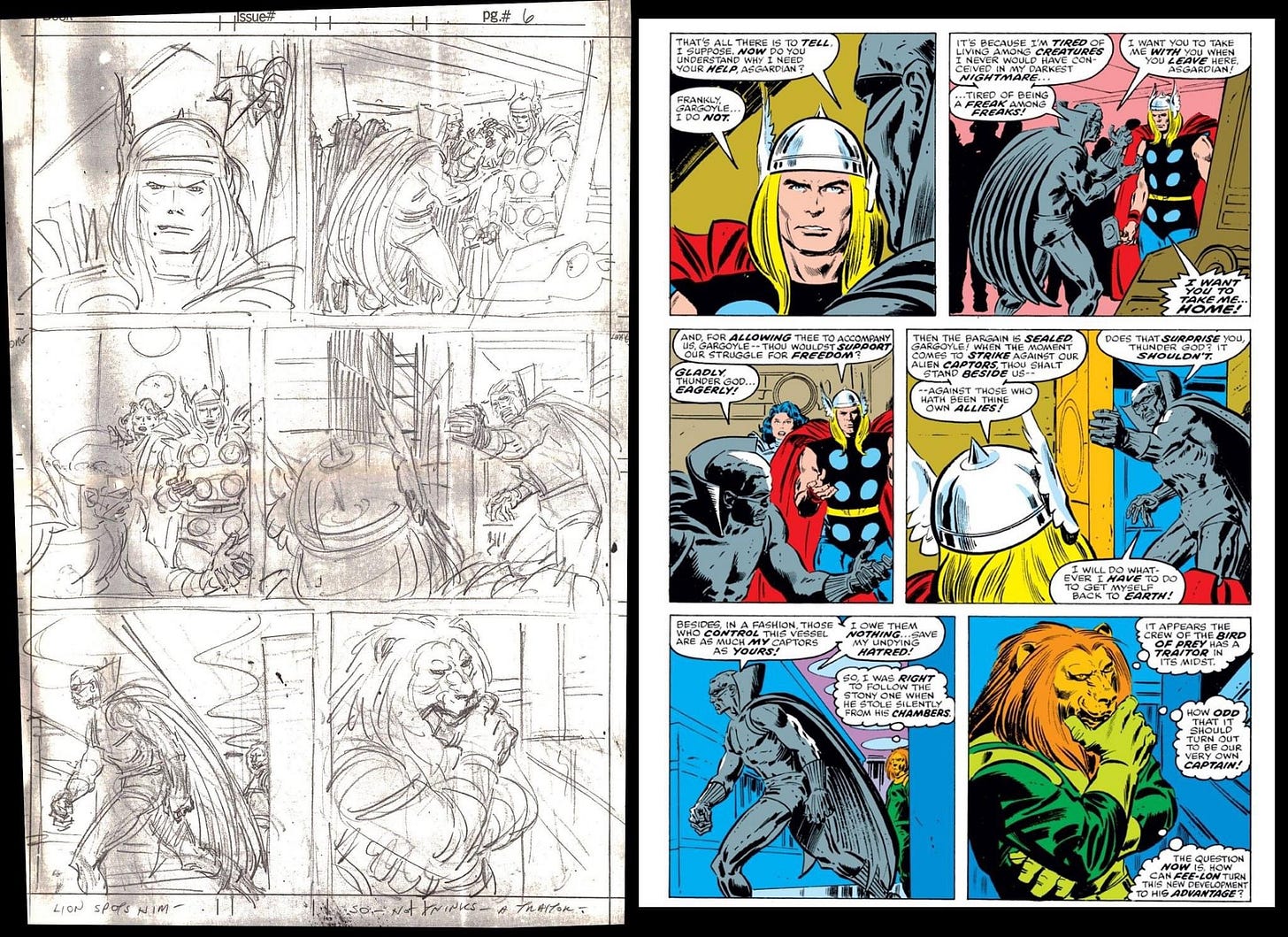

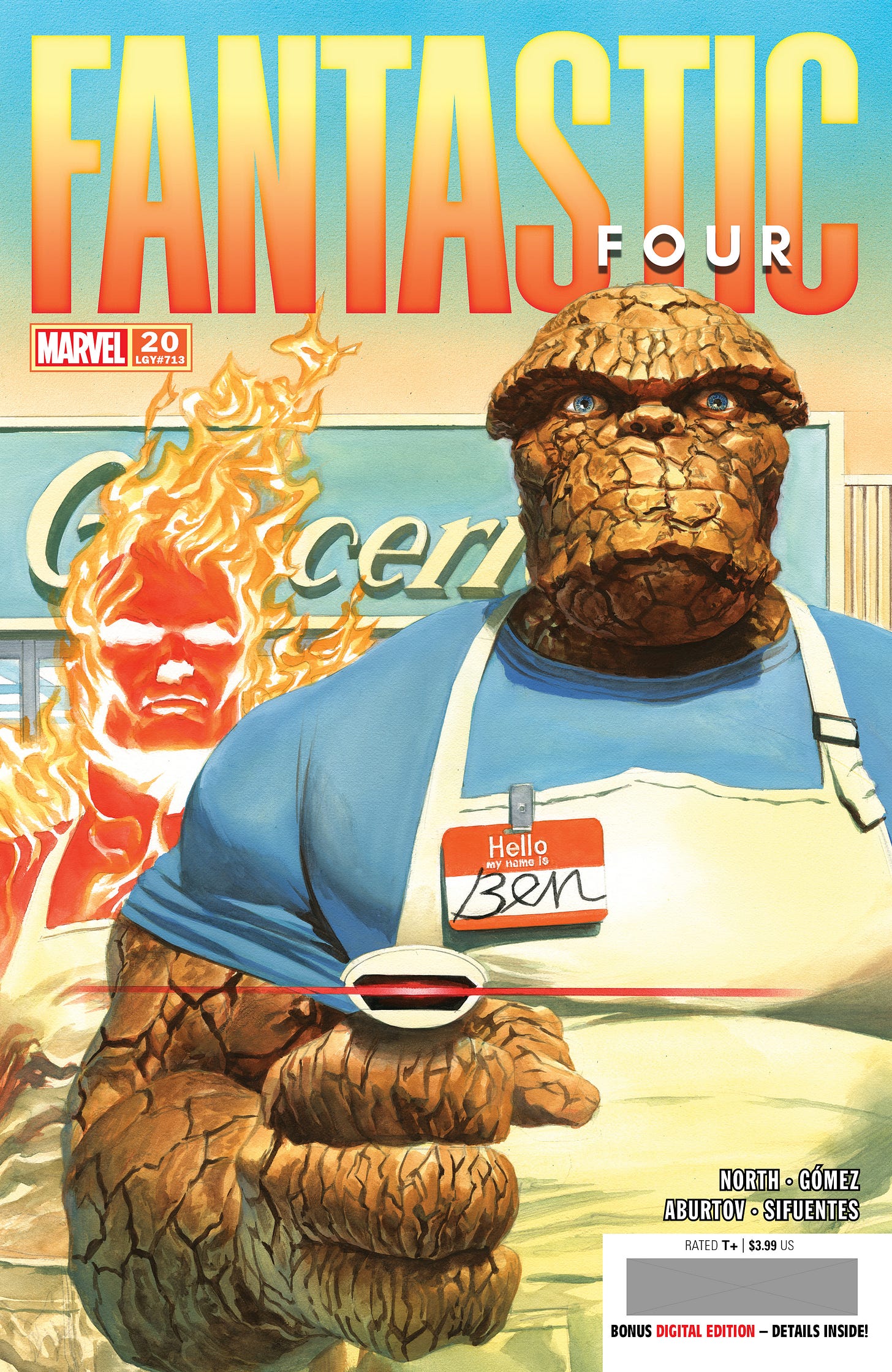

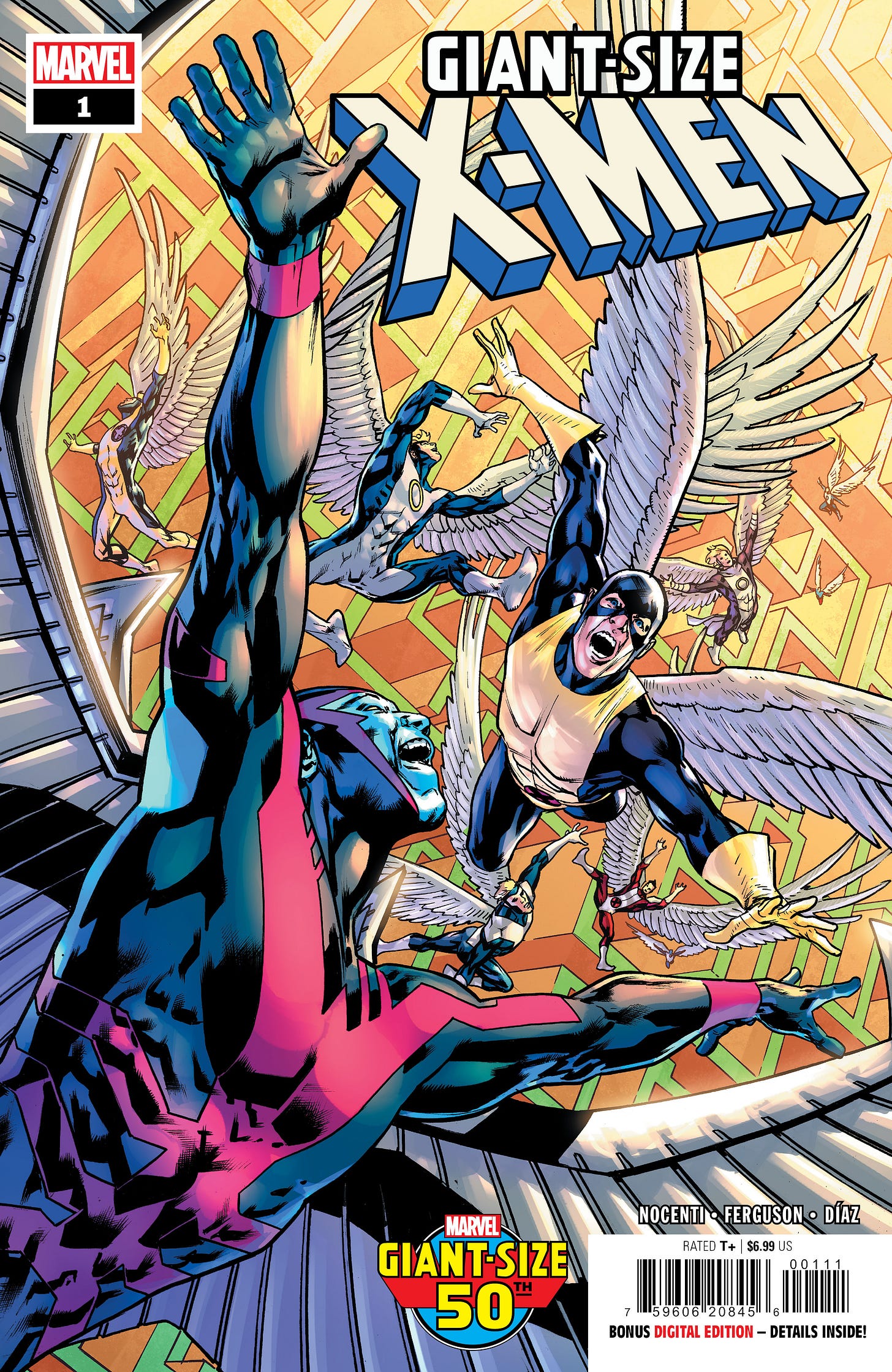
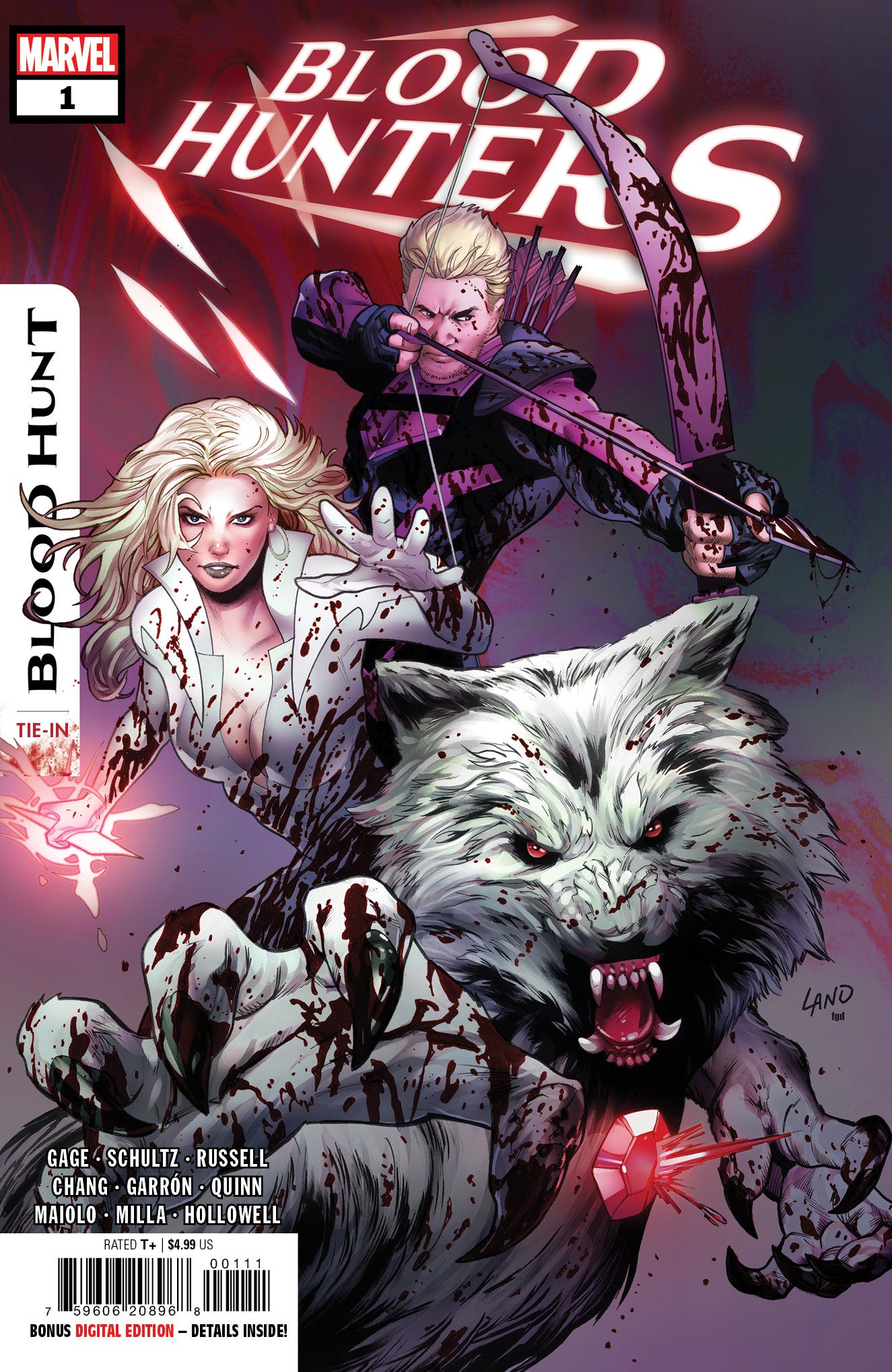
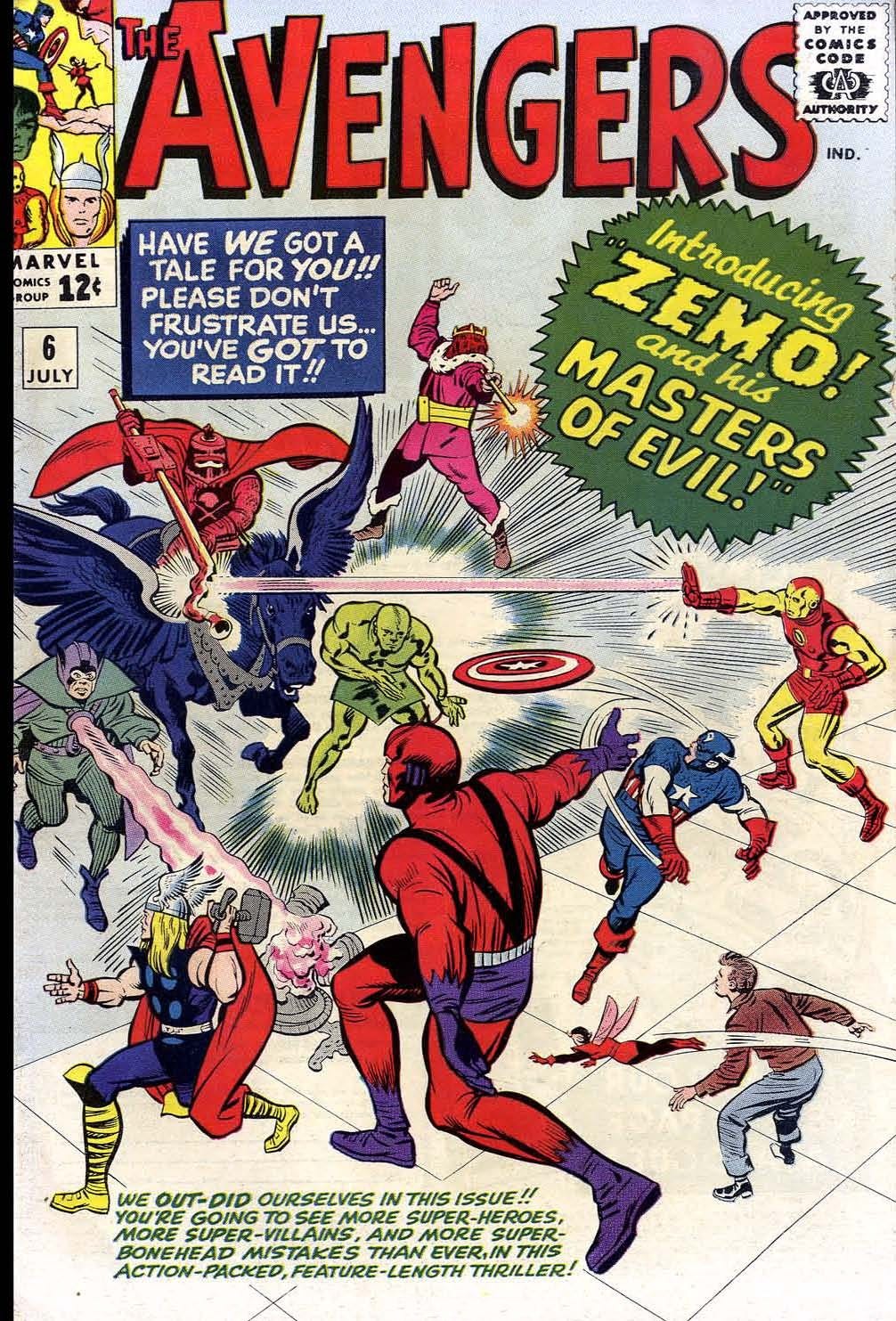
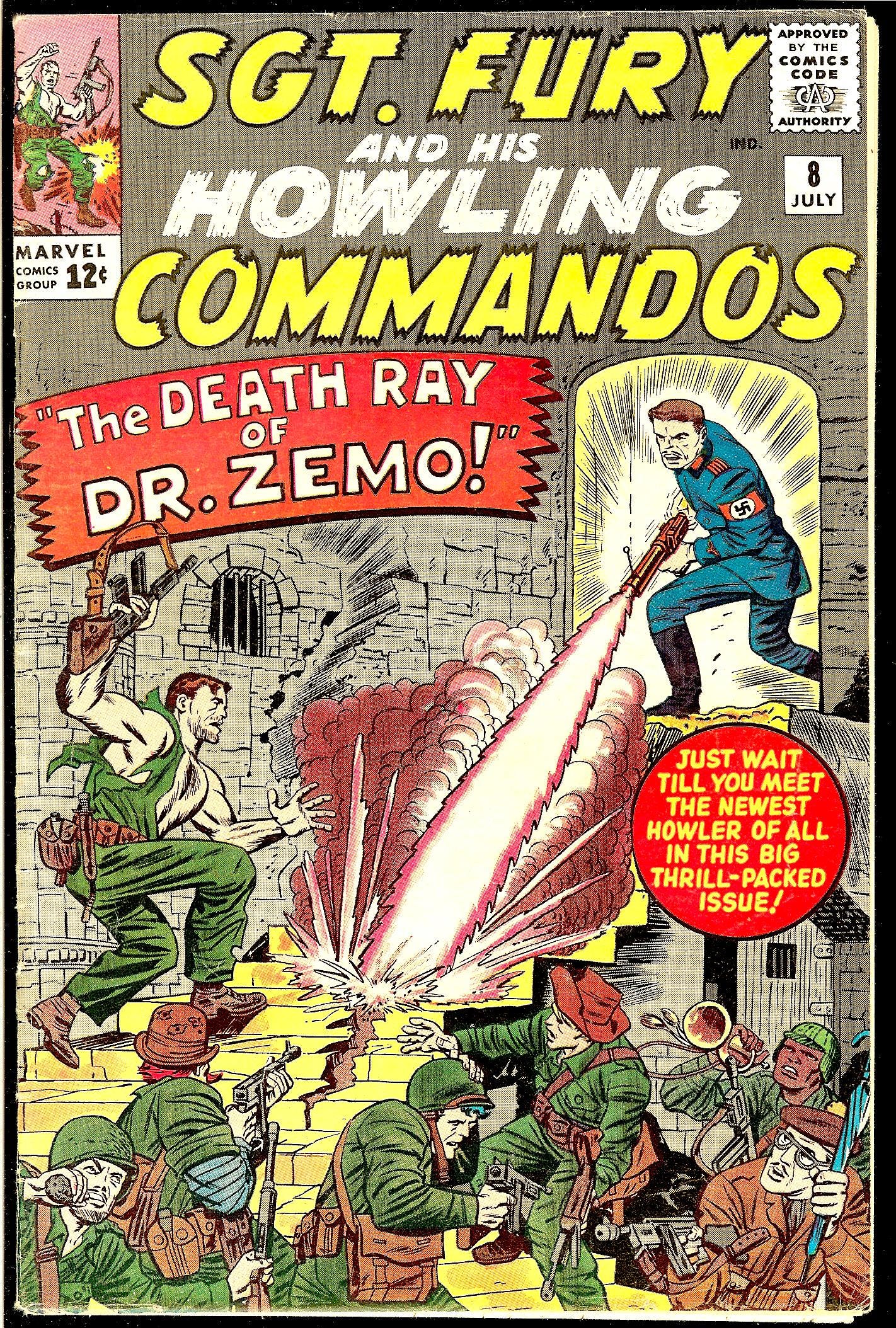

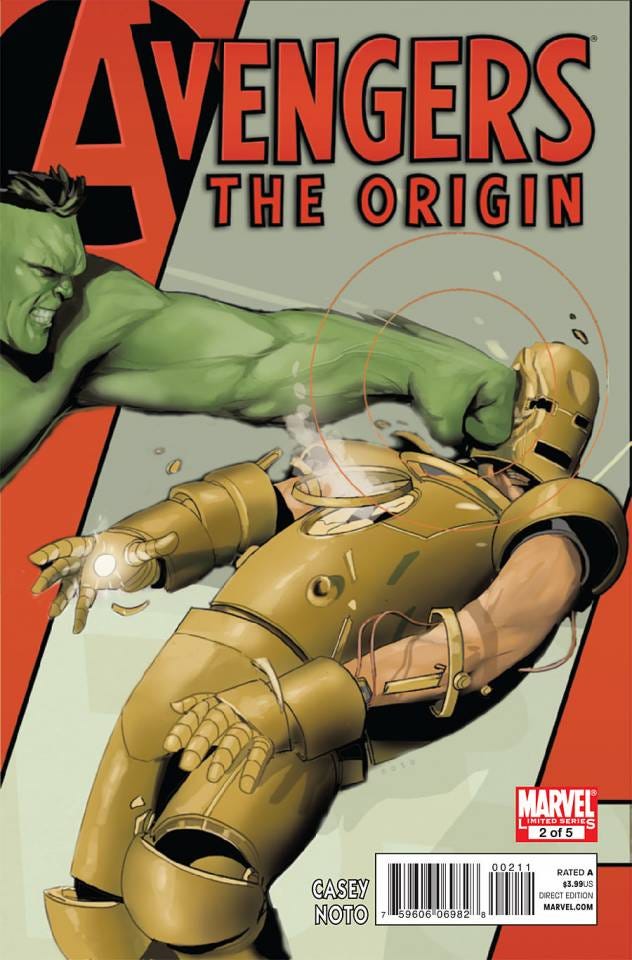
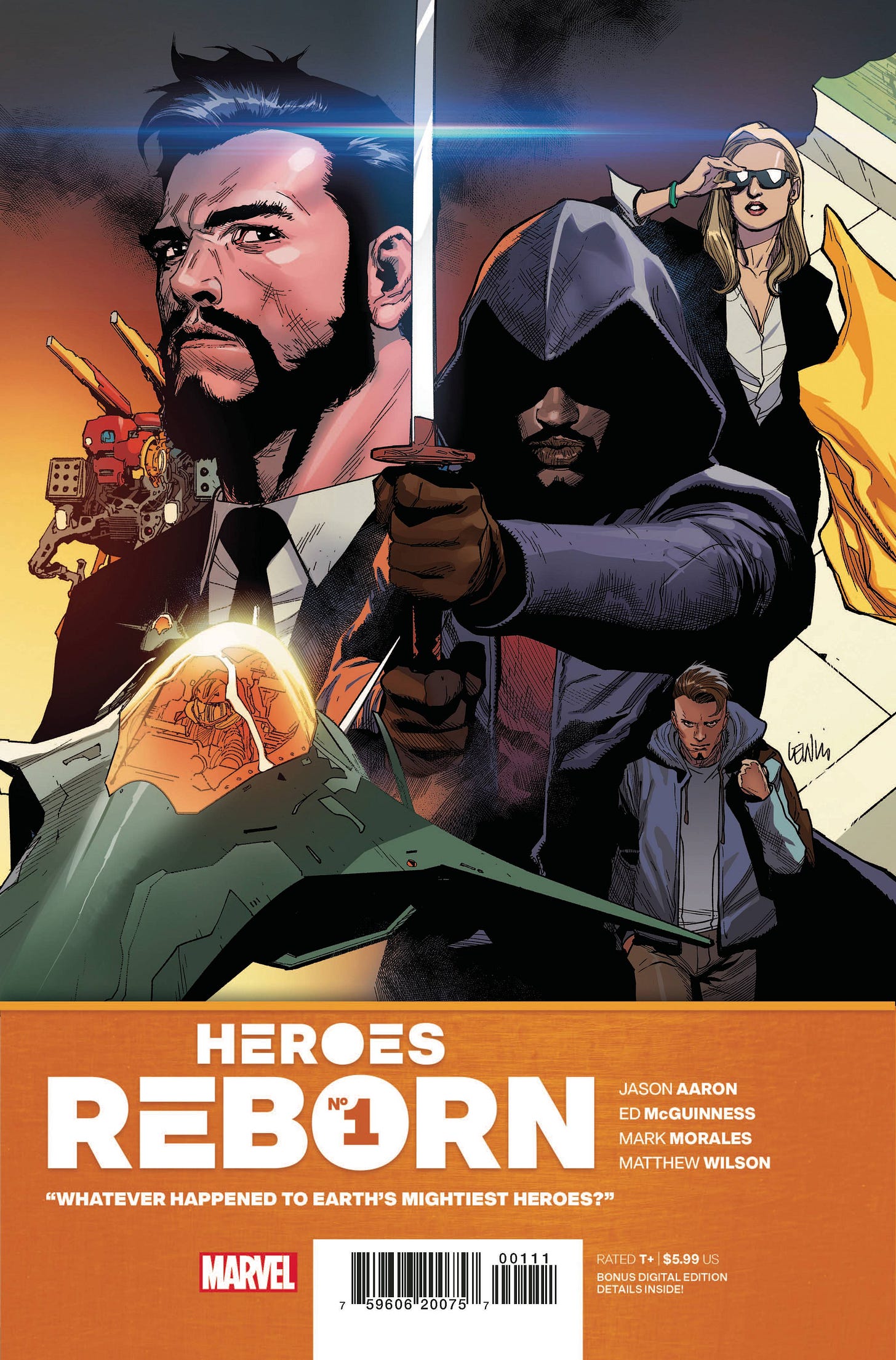
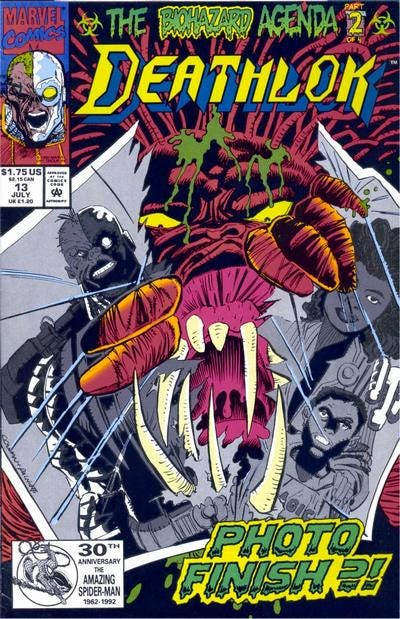
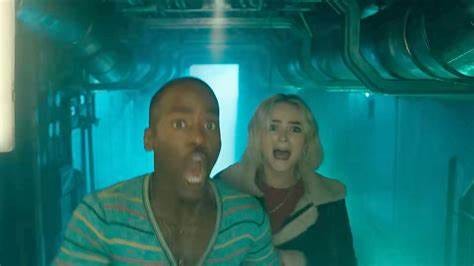

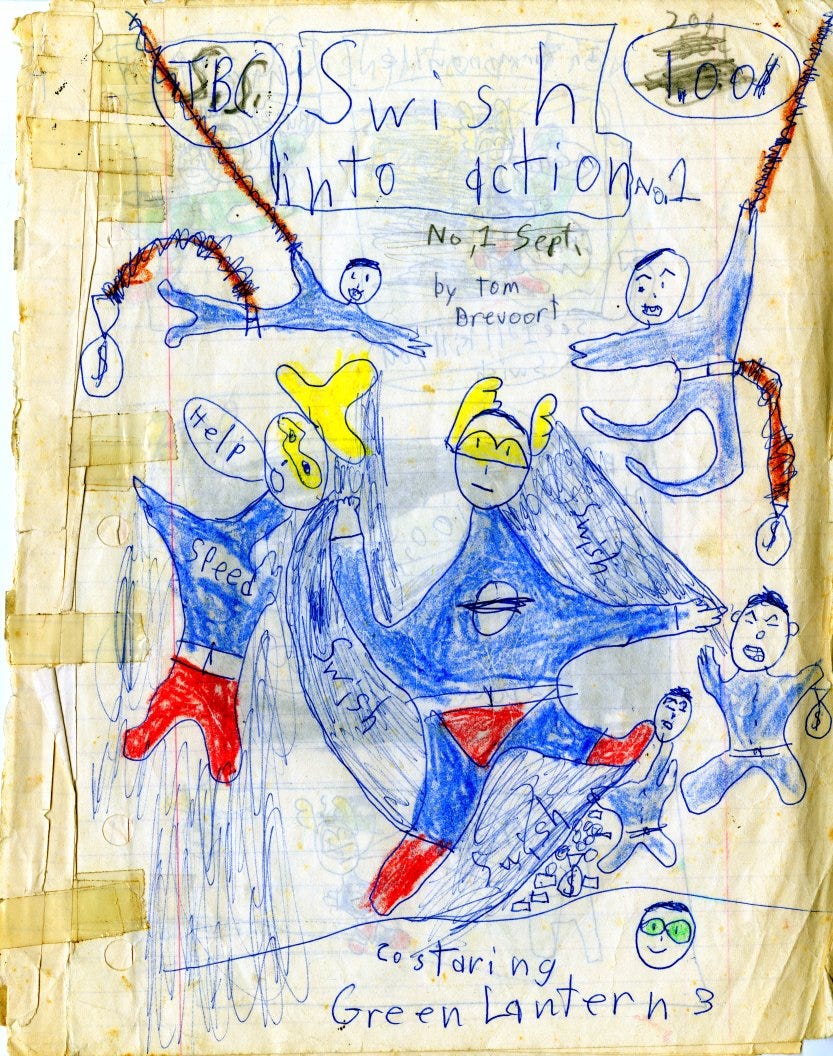
First off, I strolled into a comic shop yesterday (incognito; it's important not to overwhelm or intimidate the staff through the presence of a highly-admired comics journalist) and want to congratulate you on your formal debutante debut of the revamped X-Men.
My question was piqued by your mention that the thinking "at the time" of Chris Claremont's third X-Men stint was to write for the eventual trade collection -- which implies that *isn't* the thinking in 2024. So I'm wondering, what is your policy on what a single issue ought to do these days? Certainly, telling a full, self-contained story in 20 pages given the storytelling style of modern comics is near-impossible, and the sort of neverending inherited subplots that used to permeate Marvel have gone out of style. So what do you try to make a comic do?
Can we credit you as another Wolverine creator now?
I will always have to say that you are far too hard on yourself in these Chronicles. Everyone on the book had tremendous respect for you. And having to work with two writers you interned with had to get into your head. Dwayne was tough to argue with. He knew how to really make his point and convince you whatever he wanted to do was right. And for all of us who ever had a schedule breathing down our necks, we get how stories that maybe should have been rethought go through until it’s too late. We were all concerned about his story and none of us stood up and said no way. Today, when I consult on a story I no longer sugar coat it. I’m blunt. More so than you remember lol. But as an editor, I made these same choices and now I kick myself. I wish Dwayne and I would have discussed all our storylines together. We didn’t. We sort of let each do as we pleased. I feel like I kind of left you to be the bad guy. And it was terrible to realize that maybe it was time to replace Denys. Especially since we all really liked Denys personally and had a ton of respect for him. But Mike and I spent a lot of time deciding the breakdowns so they could be inked. And this family story just played so strangely normal. I really had to wrack my brain to figure out how I was going to handle this in my stories.